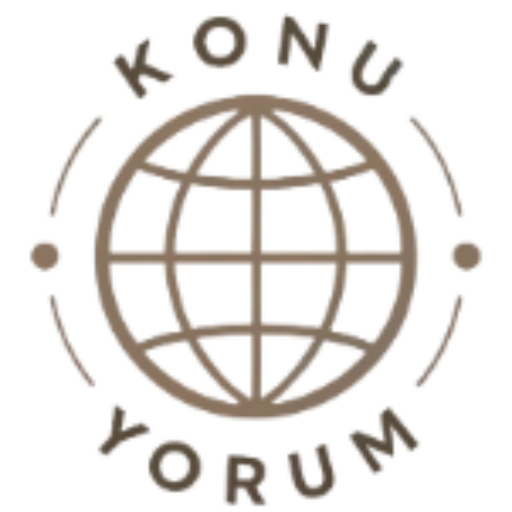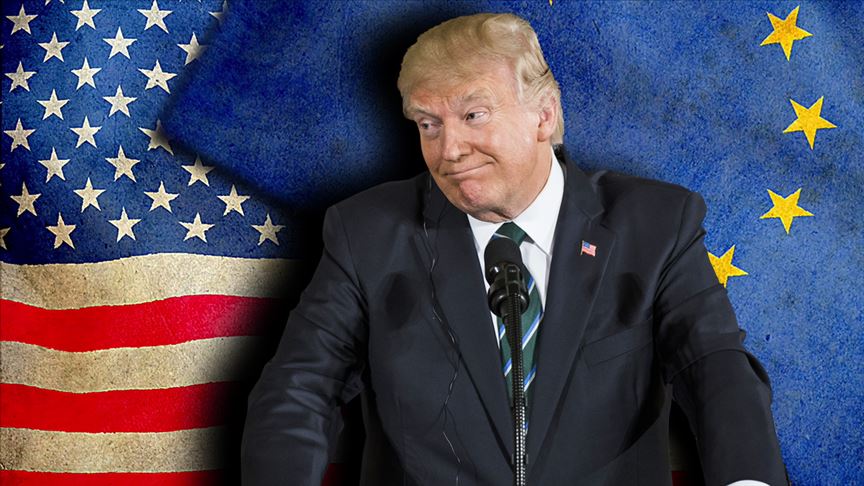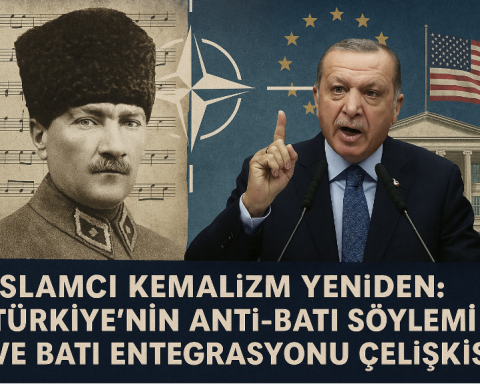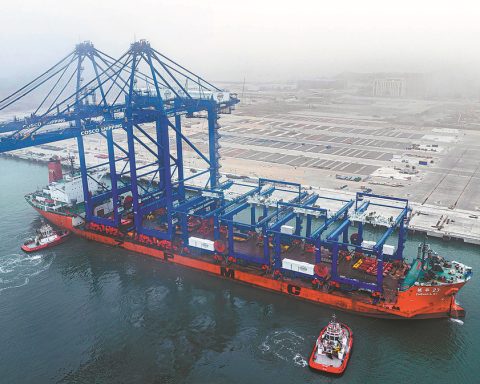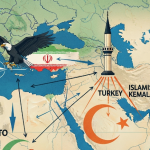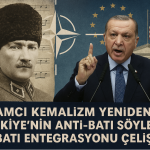Departure from Traditional Diplomatic Norms
With Donald Trump’s second term as U.S. president, relations between Washington and Europe significantly deviated from their traditional course. The Trump administration, distancing itself from multilateral diplomacy and allied relationships, pursued an “America First” approach, which shook transatlantic ties. For instance, Trump adopted a rigid transactional approach that prioritized U.S. interests and sidelined institutions and agreements that had long bound Europe together.
This approach led to confrontations between the U.S. and Europe on nearly every issue, from NATO and climate agreements to trade and China policy. Consequently, the transatlantic alliance came to be described as being on the brink of “irreparable” conflicts, with Europe seeing itself at the dawn of a “new post-American era” in which it could no longer rely on U.S. leadership as it once did.
Traditionally, U.S. administrations have supported European integration and NATO while emphasizing shared values. In contrast, Trump tended to view the European Union as a competitor. He even labeled the EU a “foe” in trade, withdrew from multilateral agreements such as the Paris Climate Accord and the Iran nuclear deal, and backed developments like Brexit that weakened the EU—all of which marked a departure from conventional diplomacy. His unilateral decisions, rather than consulting allies—such as the abrupt decision to withdraw from Syria—sparked concerns in European capitals about a lack of coordination with the U.S. and fears that NATO was undergoing “brain death.”
Trump’s preference for bilateral negotiations over multilateral frameworks sidelined institutions like NATO and the EU, making it harder for Europe to respond collectively to global challenges. Ultimately, the Trump era introduced an unusual fragility to transatlantic relations by casting doubt on the U.S.’s commitment to its alliances.
Trump’s Stance on NATO Allies and the Future of the Alliance
The Trump administration’s approach toward NATO allies in Europe was unusually harsh and demanding. President Trump frequently criticized European countries for not allocating enough budget to defense, referring to them as “delinquent” nations that were not fulfilling their obligations.
He was particularly adamant about burden-sharing in defense spending, insisting that NATO members increase their military expenditures to at least 2% of their GDP. However, he went even further, unilaterally declaring that the target should be raised to 5%.
This stance put immense pressure on U.S. allies. Trump suggested that if Europeans did not increase their defense spending, the U.S. could reduce its role in the alliance—or even consider withdrawing from NATO altogether.
In fact, during a 2018 NATO summit, some European leaders reported that Trump was coming “dangerously close” to pulling the U.S. out of NATO.
Such threats raised serious concerns about the alliance’s future, as even NATO’s core principle—the collective defense commitment under Article 5—was, for the first time, perceived as a conditional and uncertain promise by the U.S.
Trump’s stance toward NATO allies heightened tensions within the alliance in the short term. Eastern European members, such as Poland and the Baltic states, viewed U.S. support as vital against the Russian threat. To appease Trump, they quickly ramped up their defense spending and even proposed hosting U.S. troops—Poland, for instance, suggested the idea of a “Fort Trump.” However, other allies found Trump’s demands economically unsustainable and criticized them, fueling internal divisions within NATO.
Trump’s rhetoric questioning the validity of Article 5 emboldened NATO skeptics and cast doubt on the credibility of collective defense.
On the other hand, Trump’s pressure did lead to increased European defense spending. After 2016, European countries began raising their defense budgets—initially to satisfy U.S. demands, but by Trump’s second term, largely due to their own security concerns following Russia’s invasion of Ukraine.
For instance, by 2024, total defense spending by European NATO members and Canada had increased by over 40% compared to 2016, rising from $350 billion to $485 billion. The average European defense expenditure reached 2.2% of GDP.
While these increases partially addressed Trump’s criticisms, the question remained: would they be enough to compensate for a potential reduction in U.S. contributions?
The Trump administration also signaled a reduction in U.S. financial contributions to NATO and its military presence in Europe. During his second term, discussions emerged within the Pentagon about the possibility of cutting funding for Europe or gradually withdrawing U.S. forces from the continent.
This prospect alarmed NATO’s easternmost members, who warned that if the alliance’s deterrence weakened, Russia might be emboldened to take more aggressive actions.
Experts argued that such radical policy shifts from Washington would undermine the alliance’s cohesion and call NATO’s credibility into question.
Indeed, for the first time, NATO’s survival became a serious topic of debate during the Trump era. Without the U.S. security guarantee, NATO’s collective defense mechanism could lose its meaning, potentially damaging America’s global standing and encouraging Russia to take bolder steps.
Trump’s approach to allies had a weakening effect on NATO from within, increasing uncertainty about the alliance’s future and forcing Europe to reconsider its security architecture.
Europe’s Reactions: Perspectives of France, Germany, and the United Kingdom
The major European powers responded differently to the Trump administration’s policies, but the common denominator was discomfort and strategic uncertainty. France was among the most outspoken critics of Trump’s approach. In 2019, French President Emmanuel Macron warned that NATO was experiencing “brain death,” highlighting the lack of coordination between the U.S. and Europe.
Macron sharply criticized Trump’s unilateral actions—such as withdrawing from Syria without consulting allies and allowing Turkey’s military operations—along with his broader view of NATO. In Macron’s assessment, Trump treated NATO as a “business project,” expecting allies to buy American weapons in exchange for U.S. protection.
Rejecting this notion, Macron stated, “France did not join NATO for this.”
Advocating for greater European autonomy in defense, France led calls for the EU to develop a common defense capability. Macron frequently emphasized the need for Europe to control its own destiny, promoting the idea of a European army.
This rhetoric intensified during Trump’s second term, as the perceived unreliability of Washington reinforced Paris’s belief that Europe needed to “wake up” to safeguard its geopolitical presence.
Germany, on the other hand, sought to maintain traditional transatlantic ties during the Trump era but experienced deep disappointment. Former Chancellor Angela Merkel delivered a historic warning after the G7 and NATO summits in Trump’s first year, stating that “Europe can no longer completely rely on others.”
Merkel underscored the need for Europe to take its fate into its own hands, while still expressing a desire to maintain friendly relations with the U.S. Her remarks reflected Germany’s shaken confidence in Trump’s leadership and its growing determination to stand on its own.
Germany pursued a dual strategy: attempting to keep NATO intact by negotiating with Trump while also increasing its defense spending. For years, Germany’s military budget had stagnated at around 1% of GDP, but it began moving toward the 2% target. By the mid-2020s, following Russia’s invasion of Ukraine, Germany allocated a €100 billion special fund to strengthen the Bundeswehr and fulfill NATO commitments.
However, German policymakers remained skeptical of a fully independent European defense structure, seeing no viable alternative to NATO’s collective security umbrella. Their approach focused on strengthening European defense without severing ties with the U.S.
The United Kingdom (UK) took a different stance, responding to Trump’s European policies with more caution. Historically valuing its “special relationship” with the U.S. and being a staunch NATO advocate, the UK avoided direct criticism of Trump. Following Brexit, Britain sought close trade and security ties with the U.S., making its leaders hesitant to openly challenge Trump.
Successive British prime ministers—first Theresa May and then Boris Johnson—continued to emphasize NATO’s importance and called for alliance unity. During the 2019 NATO Leaders’ Summit in London, the UK played a key role in issuing joint statements reaffirming NATO’s success over the past 70 years, including Trump in these declarations.
However, behind the scenes, British diplomats were also uneasy about Washington’s wavering commitments. The UK agreed with Trump on the need for increased European defense spending and took steps in this direction. In 2022, the UK announced an increase in its defense budget, pledging to reach 2.5% of GDP within a few years.
This move served both as a message to the U.S. about burden-sharing and as an investment in Britain’s national security. In essence, the UK sought to maintain NATO’s stability and keep the U.S. engaged in the alliance while closely monitoring European defense cooperation initiatives as potential alternatives.
Overall, Trump’s reelection was not met with enthusiasm in European capitals. With few exceptions—such as Hungary’s leadership, which shared ideological affinities with Trump—most European leaders and public opinion entered a state of concern and preparation.
With Trump’s return, EU leaders braced for renewed tensions with the U.S. across a broad spectrum of issues, from climate policy to trade and security.
For example, EU Commission officials prepared retaliatory measures in case of a trade war, while European defense planning accelerated both within and outside NATO.
Ultimately, different European responses reflected their strategic priorities: France pushed for strategic autonomy, Germany adopted a cautious yet proactive stance, and the UK sought a transatlantic balance. However, the overarching theme was Europe’s increasing caution toward U.S. policies and a growing determination to develop independent security capabilities. These reactions illustrated Europe’s adaptation efforts to the shocks of the Trump era.
The Future of NATO: A Stronger Alliance or Europe’s Independent Defense?
Trump’s approach introduced dynamics that fueled two opposing scenarios for NATO’s future. On one hand, uncertainty surrounding U.S. commitments could weaken NATO to the point of dysfunction. On the other hand, European allies’ efforts to enhance their self-defense capabilities could either transform NATO into a more balanced and resilient alliance in the long run or push Europe toward an independent defense structure. Current debates revolve around different possibilities between these two extremes.
The first scenario envisions NATO gradually weakening or effectively “dissolving.” Some perspectives voiced during Trump’s second term suggested that the U.S. might sideline NATO into a passive, “dormant” state—essentially reducing it to a loose security pact that intervenes only in direct crises.
Advisors close to Trump proposed a model in which the U.S. would significantly scale back its role in European security, leaving the burden entirely on European nations.
If Washington were to withdraw from its collective defense commitments or make them conditional, trust among NATO allies could erode rapidly. This would leave Eastern European countries—especially those reliant on the U.S. nuclear umbrella and military capabilities—facing a significant security vacuum. Europe would struggle to compensate for this shortfall in the short term. Such a weakening of NATO could invite adversarial actors, such as Russia, to exploit divisions within the Western alliance. In fact, Trump’s preference for bilateral agreements over NATO’s collective decision-making mechanisms had already emboldened Moscow, which leveraged internal divisions within the West for strategic gains.
If NATO’s integrity were to break down, Europe’s security architecture could regress to the uncertainties of previous decades. To prevent this pessimistic scenario, many European nations continue diplomatic efforts to reinforce alliance cohesion, regardless of political shifts in Washington.
The second scenario envisions NATO adapting and strengthening through specific reforms and increased European burden-sharing. According to this perspective, Trump’s pressure—combined with the threat posed by Russia—helped end Europe’s longstanding habit of “free-riding” on U.S. defense commitments. Indeed, by the mid-2020s, many NATO members had significantly increased their defense budgets. Poland and the Baltic states were approaching 4-5% of GDP in military spending, while Finland and Sweden raised their budgets as they joined NATO. The UK also pledged to increase its defense spending to 2.5% of GDP.
These developments could lead to a fairer distribution of defense responsibilities within NATO. While European allies may not meet Trump’s extreme demands, NATO summits after 2024 are likely to adopt a new defense spending benchmark—potentially around 3% of GDP.
Such a measure would demonstrate Europe’s commitment to taking on greater defense responsibilities, potentially mitigating Trump administration criticisms of NATO’s financial burden on the U.S. and reinforcing transatlantic stability.
If European nations can coordinate their efforts to enhance deterrence capabilities—such as air defense, long-range strike power, and logistical support—and strengthen NATO’s European pillar, the alliance could become more resilient and less susceptible to shifts in U.S. domestic politics. In this scenario, rather than weakening, NATO would evolve into a more balanced alliance with shared responsibilities on both sides of the Atlantic. However, achieving this would require deeper military and political integration within Europe, which is far from guaranteed, given the differing strategic priorities among member states.
A third possibility is that Europe develops a more independent defense policy parallel to NATO. The concept of “strategic autonomy” (autonomie stratégique), frequently discussed during the Trump era, implies that Europe should be able to ensure its own security without relying on the U.S. when necessary. In this direction, the EU launched Permanent Structured Cooperation (PESCO) projects, established the European Defense Fund, and promoted joint military exercises and increased cooperation. Although Europe accelerated these initiatives in response to signals from Trump’s first term, the U.S. paradoxically did not welcome NATO-independent European defense efforts—Washington objected in 2019 to PESCO excluding American defense companies.
Thus, the Trump administration was dissatisfied with NATO’s burden-sharing but also opposed Europe’s independent security steps, making the path toward strategic autonomy more challenging. However, with Trump’s second term, European resolve to reduce dependency on the U.S. strengthened. EU leaders began viewing Trump’s return as a warning, emphasizing that investing in their own deterrent capabilities was the best form of preparation. Still, a realistic assessment suggests that Europe is far from replacing the U.S. in defense capacity in the near future.
Financial constraints, political divisions among EU states, and Europe’s reliance on the U.S. for nuclear deterrence remain significant obstacles to a fully independent European defense architecture.
In practice, this means Europe’s efforts toward strategic autonomy and strengthening its role within NATO will likely proceed simultaneously. In the coming years, Europe will aim to be both an equal partner within NATO and a power capable of acting independently if needed.
Trump’s second term has disrupted decades-long transatlantic dynamics, marking a turning point in U.S.-Europe relations. The U.S.’s growing reluctance to lead its traditional alliances is pushing Europe to take greater responsibility for its own security.
Tensions within NATO underscore that the alliance is at a critical but uncertain juncture. While European nations seek to keep NATO intact and retain U.S. engagement through compromises, they are also preparing for worst-case scenarios by accelerating independent defense initiatives.
The outcome of this balance will depend on both Trump’s policies and Europe’s ability to act in unity. What is certain is that the transatlantic security architecture no longer functions as it once did, and both sides are aware of the need to recalibrate their positions.
For Europe, the best course of action appears to be remaining united while simultaneously strengthening NATO and building a “Plan B” through independent capabilities. By doing so, regardless of whether Trump remains in power or not, the Western alliance can be better prepared and more resilient in facing future challenges.
Sources: This analysis is based on recent reports, expert assessments, and statements from policymakers, with a focus on publications from leading think tanks and news agencies. Developments in this critical turning point in U.S.-Europe relations are being closely monitored, and the information presented here reflects insights from up-to-date sources.
Analysis by Hayati Esen
